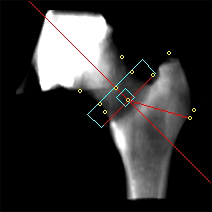Ward it off
The International Society for Clinical Densitometry published the following position paper in 2002 in the Journal of Clinical Densitometry: “Which central dual X-ray absorptiometry skeletal sites and regions of interest should be used to determine the diagnosis of osteoporosis?”
The abstract states:
“Although central measurement of bone mass by dual X-ray absorptiometry (DXA) is viewed by many as the ‘gold standard’ for the diagnosis of osteoporosis in patients without previous fragility fracture, controversy remains on how best to use central DXA as a tool for diagnosis. Questions concerning the measurement of bone mass of the central skeleton were addressed at the International Society for Clinical Densitometry Position Development Conference. An expert panel agreed on the following positions: First, the diagnosis of osteoporosis should be based on the lowest T-score of either the PA spine or hip. Second, both the PA spine and hip should be measured. Third, whenever possible, bone mineral density (BMD) of the first four lumbar vertebrae should be measured. Fourth, DXA manufacturers should use L1-L4 as the default region of interest for their printouts. Fifth, BMD of either hip may be measured. Sixth, the lowest T-score of the three sites total hip, femoral neck, or trochanter should be considered. Seventh, Ward's area should not be used for diagnostic purposes; DXA manufacturers should not include this region in the default printout. Eighth, BMD of the forearm should be measured if the hip or spine cannot be accurately measured. Finally, lateral spine BMD should not be used to diagnose osteoporosis.”

Source: Courtesy of Michael Kleerekoper, MD, MACE
This DXA image of the proximal femur highlights the femoral neck region and the minute Ward’s area. Please note: It is not a triangle — it is a 1 cm2 area in the femoral neck that is selected by the DXA instrument as that section of the proximal femur that has the least bone mineral content.
To the best of my knowledge, Ward’s area does not contribute to our understanding of skeletal health in an individual patient or in groups of patients. Regrettably, that does not prevent several DXA centers reporting T- or Z-scores for Ward’s Area, and more often than not, those centers report the results for Ward’s TRIANGLE!
Ward it off!
For more information:
Hamy RC. J Clin Densitom. 2002;5:Suppl: S11-8.
